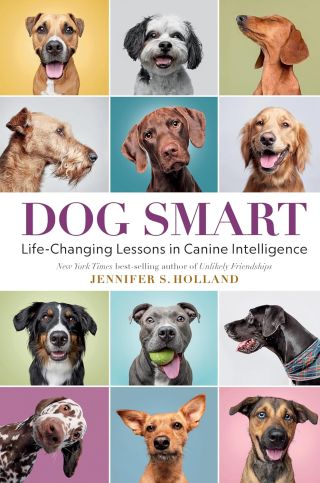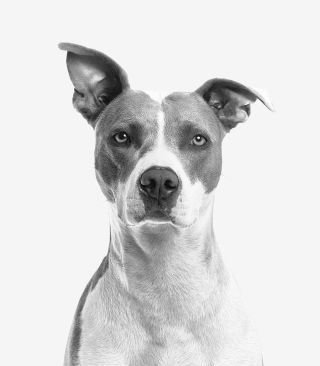Intelligence
Dog Smart: The Science and Secrets of Canine Intelligence
The book Dog Smart on social and emotional intelligence in dog breeds and mixes.
Updated July 3, 2024 Reviewed by Davia Sills
Key points
- A new book focuses on finding ways to illustrate dogs’ own forms of multiple intelligences.
- Dogs aren't less smart than other nonhumans or humans; they're just different smart.
Research on all aspects of dog behavior, including their social, cognitive, emotional, and moral lives and the nature of dog-human relationships, has blossomed in recent years, and often, it's difficult to keep up with what we're learning about these amazing canines who live in vastly different environs.1. Focusing more on how dogs think and tell us what's on their minds, award-winning author Jennifer Holland helps clear the air about what we know about canine cognition in her latest book titled Dog Smart: Life-Changing Lessons in Canine Intelligence. Filled with solid science, expert interviews, and personal stories, Jennifer critically covers the landscape of dog intelligence for academics and lay readers alike, and this delightful book can help us give our dogs the best lives possible. Here's what she had to say about what's happening in dogs' brains and hearts.

Why did you write Dog Smart?
First off, the obvious reason: I love dogs! And I’ve always been amazed by some of the things they can—and will—do. It occurred to me that the “doggiest” things about them, from their incredible noses to their intricate intraspecies communication skills, could really be seen as types of intelligence. I started reading up on the idea of “multiple intelligences,” which certainly applies to humans, and decided it would be fun to investigate the types of smarts that make a dog a dog, both within the human context and outside of it.
How does your book relate to your background and general areas of interest?
My career has been long focused on writing about animals, though my years at National Geographic were most focused on creatures in the wild. My Unlikely Friendships series turned my attention to animals closer to home, which ultimately led me to the dogs on the end of my bed. I don’t discriminate; I love all animals and appreciate the opportunity to get inside their worlds (and their heads!) wherever they live.
Who do you hope to reach with your interesting and important book?
I’m confident that people who already love and appreciate dogs will enjoy and learn from the book, but of course, the hope is to reach those who might be more skeptical of animals’ smarts and capabilities. I think more people today accept that non-human animals are thinking, feeling, decision-making, and problem-solving beings than ever before, but we still see ourselves as more intelligent, as “above” them. If we shift our thinking just a little, we can appreciate how intelligence has simply manifested differently in these other beings. It doesn’t mean they’re less smart, just different smart. Dog smart, if I may.

What are some of the major topics you consider?
First, I examine how the dog became the dog, appreciating the adaptability of the species, which is what let it be so incredibly successful. My approach from there was to find ways to illustrate dogs’ own forms of intelligence, in this case olfactory, social, communicative, emotional, and others, and the best way seemed to be through the world of working dogs, which have had the best opportunities to express their smarts. Of course, their trainers/handlers/owners are also part of this story, and I was fortunate to have time “in the field” with generous people and their sniffer/detection dogs, search-and-rescue dogs, emotional support dogs, seeing-eye dogs, and many more, examining how the animals relate, learn, remember, and make choices.
I got very into dogs’ sensory experiences, and their subtle ways of communicating, and how these experiences differ from ours. I include a lot of personal stories that illustrate my own journey to understanding dogs better. And finally, I consider how we can “give back” to dogs by letting them use their senses and express their smarts even when their methods confound us.
How does your book differ from others that are concerned with some of the same general topics?
There are so many great books out there about dogs, so I worked hard to find my own way into the subject. Considering dogs’ “multiple intelligences” so directly is one way I approached it differently. And I think my mix of personal stories, field work, and expert interviews brings together the ideas in a unique way.
I really got “out there” and dug in, putting myself into such a variety of contexts to give me a really broad, but also very detailed, view of my subjects. I got attacked by a police dog (on purpose), walked with a guide dog with my eyes closed, ran around with cadaver dogs and conservation sniffer dogs and many others, observed military dogs in training, and even observed a dog getting an MRI while its brain activity showed up on a screen in front of me. And while the book is science-y, I think it’s very readable and fun.
What are you hoping happens as people learn more about dog smarts?
Every animal lover would like to see people treating our fellow creatures with more respect and compassion, and I think appreciating them in new ways can lead to improvements there. But also, I’d really like to see us learning dogs’ language and allowing dogs to be dogs whenever possible, rather than always wrenching them back into the human world of rules and commands and clean paws. There’s a time and place for manners, of course, but asking for them requires dogs to suppress their natural urges, their dogness. Dogs give us so much, and we owe it to them to give back by letting them be themselves.
References
In conversation with Jennifer S. Holland. Jennifer is the author of Unlikely Friendships, which spent more than 46 weeks on the New York Times bestseller list. Holland’s insatiable curiosity has taken her all over the world: flying in zero gravity over the Gulf of Mexico, scuba diving with tiger sharks in the Bahamas, climbing the tallest tree in Costa Rica, and camping out with bushmen in Papua New Guinea. A long-time writer for National Geographic and National Wildlife and a contributor to the New York Times, the Washington Post, and NPR, Jennifer divides her time between suburban Maryland and a cabin in central Virginia.
1) Are Big Dogs Really Smarter than Small Dogs?; Dogs Are Not Smarter Than Cats, and More: A Media Muddle; Dogs Are Brainier Than Cats, But Are They Really Smarter?; "What Do All These Dog Studies Really Mean?"; Are Pet Dogs Really Better Off Than Free-Range Canines?; Why It's Important (and Fun) to Study Free-Running Dogs; Minding Dogs: What They Think About, Feel, and Need From Us; How Dogs Hear and Speak With the World Around Them; How Dogs See the World: Some Facts About the Canine Cosmos; Unleashing Your Dog: A Field Guide to Giving Your Canine Companion the Best Life Possible A Dog's World: Imagining the Lives of Dogs in a World Without Humans; Dogs Demystified: An A-to-Z Guide to All Things Canine.


